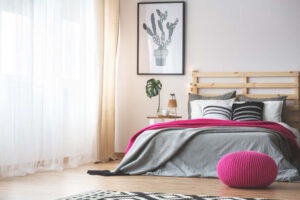Seven Tips For Living In An Old House

Are you currently living in a house as old as the pyramids? Does your roof often leak when it rains? Is your bathroom a mess because of clogged drains and leaky faucets and pipes? Has mold been making itself at home lately? It is time you gave your old home a makeover.
While you could always get a new house with a modern touch, old houses have a unique charm. Unlike modern cookie-cutter homes, old houses often come with distinct layouts and designs that set them apart.
Restoring an old house can be a labor of love. Bringing back its original beauty through renovation projects allows homeowners to leave their mark on the home’s history while increasing its value. Whether it’s an antique plumbing system throwing shade or a roof that thinks it’s an open-air concept, approach each problem as a chance to showcase your repair mastery with style.
Bathroom remodeling in your vintage abode
Begin by evaluating what you need from your bathroom. Consider factors like functionality, storage, and the overall style you want to achieve. That will help you prioritize your remodeling goals.
Choose design elements that honor your home’s vintage charm while catering to your modern needs. Maybe a walk-in shower instead of a space-consuming bathtub, or installing a new tub if your old bathtub has been a haven for mold? Call Zintex bathroom remodels and turn your bathroom into the elegance of the past with today’s modern conveniences.
Embrace the original bones
Before making any changes, research your home’s architectural style and time period. Understand its original features and design principles to inform your remodeling decisions. Begin by highlighting the architectural elements that define your home’s era. Crown moldings, woodwork, and unique windows deserve to shine in the spotlight.
Choose a color palette that resonates with your home’s vintage charm to ensure the house does not lose its uniqueness. Consult historical color charts to find hues that were popular during the time your house was built.
Also, whenever possible, restore original features rather than replace them. Refinish wood floors, repair vintage tiles, and breathe new life into classic fixtures. Your old house has a story to tell, and its quirks are part of its character. Creaky floors, uneven surfaces, and the occasional mysterious draft are all hallmarks of its history. Rather than viewing them as inconveniences, consider them endearing reminders of the past.
Electrical wiring in your old house
While the vintage aesthetics are charming, outdated electrical systems might not be endearing. These can be a safety hazard if not updated. Conduct a tour of your house. Trace the paths of wires, unearth vintage outlets, and discover the ghosts of switches from the past. Understanding the layout is your first step to conquering the puzzle.
Old houses might not have been built with today’s electronic overload in mind. Install surge protectors to safeguard your modern gadgets from potential voltage surges. For areas prone to moisture, like bathrooms and kitchens, use ground fault circuit interrupters (GFCIs). These prevent electrical shocks and offer protection where it’s needed most.
As you upgrade, aim to preserve your home’s vintage charm. Choose switches, outlets, and fixtures that mimic the style of your house’s era, creating a harmonious blend of old and new. If extensive rewiring is necessary, approach it thoughtfully. Consider how new wiring paths might impact the integrity of your home’s architecture. The goal is modernization without sacrificing history.
Inspect and maintain regularly
Old houses require a little extra TLC. Set aside time for routine inspections and maintenance checks. Look for any signs of deterioration, such as rotting wood or cracks in the foundation. Addressing issues ASAP can save you from more extensive repairs down the road.
Ensure you check windows for drafts, broken glass, and proper sealing. Well-maintained windows preserve your home’s aesthetic charm while preventing energy loss. Also, inspect your home’s foundation for cracks or shifts. Addressing foundation issues beforehand prevents costly repairs down the road. After all, better safe than sorry!
Modern comforts with vintage flair
Achieving a balance between modern comfort and historical ambiance is key. Incorporate modern appliances and furnishings that complement the vintage aesthetic. Infuse your space with furnishings that evoke the spirit of the past. Think classic silhouettes, antique accents, and weathered finishes that tell a story. You can also integrate textures that evoke different eras. From rich fabrics to rustic wood, layering textures enhance the experience of your space.
Prioritize comfort and function when choosing furniture. Look for pieces that offer modern comfort without compromising on their vintage-inspired appearance. Imagine lounging on a contemporary sofa in a room adorned with period-appropriate wallpaper—it’s the best of both worlds.
Regulate temperature wisely
Old houses can be a bit fussy when it comes to temperature control. Explore ways to improve insulation without compromising architectural integrity. Vintage windows are charming, but they might not be the most energy-efficient. Consider adding storm windows or using heavy drapes to provide an extra insulation layer during colder months. Thick curtains, draft stoppers, and even area rugs can help maintain a cozy atmosphere.
Declutter and organize
Limited storage space is often a hallmark of older homes. Embrace minimalism and declutter regularly to avoid overwhelming your space. Get creative with storage solutions that fit seamlessly into the nooks and crannies of your vintage abode.
Install floating shelves that zigzag across your walls. Not only do they store your belongings, but they also add a playful touch to your vintage home. You can also invest in multipurpose furniture – a sofa with built-in storage or an ottoman that hides clutter can be your witty allies in the storage game.
Leverage the often underutilized space beneath your staircase. Transform it into stylish storage, whether it’s bookshelves, cabinets, or a cozy reading nook, and voila, your space remains clutter-free and filled with timeless charm.
Conclusion
While old houses certainly come with unique challenges (such as maintenance and potential renovations), many people find that the rewards far outweigh these aspects. The decision to live in an old house often comes down to personal preferences, a love for history and design, and a desire for a home that’s more than just a place to live—a piece of living history.



































No comments